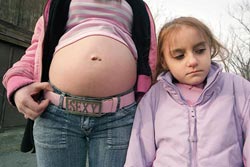
6 Questions for Susan Somers-Willett

1. Since you were working in various genres on this project, did you find that your experiences in Troy leant themselves to one form more than another? For example, the last poem in the series, “Women of Troy,” contains an array of powerful images that build beautifully in a poem, but otherwise would be hard to contextualize in an essay format.
I love to work across different genres and media…I think it teaches me something new about my craft, and it pushes my writing and thinking in new directions. I was working with a radio producer (Lu Olkowski) and a photographer who has been photographing these women for years (Brenda Kenneally), so I had to think in terms of text, sound, and image all at once. That was challenging—my creative partners taught me a lot—but through our process, I realized how many tools we share in common: photography and poetry share image, radio and poetry share sound and language, all of our media employ narrative to some degree.
The poem “Women of Troy” came about during the last few days of my visit to Troy. Lu and I were driving around all over Troy trying to track down some last-minute interviews, and as I was thinking of how the portraits of the girls were coming together, I started to lament how I wasn’t going to get to write about the array of characters and places we had been. Channeling Allen Ginsberg, we started chanting “Holy the Green Island Bridge!” and “Holy the Night Owl News!” out of the car windows as we passed by these landmarks—and I realized that the litany was a way to bring all these characters and places together.
On the other hand, I found the portraits of Dana, Billie Jean, and DJ more difficult in verse than in prose. What I could say pretty matter-of-factly in the essay—DJ has seven children, four of whom live with her and are currently staying at her mother’s house—was a struggle to say in a poem—How do I represent that she’s had seven kids but only four live with her? How do I represent that they are staying at her mother’s house but she is not? How do I represent the different living arrangements of the other three kids? etc. Because poetry is such a compressed format, I’m used to being very selective about the details I include, but with the documentary goals of the project I had to try and be more comprehensive. Now that I think about it, maybe having to think in comprehensive strokes actually enabled the poem “Women of Troy.”
2. Your essay and your poems both face the task of uniting specific personalities with the documentation of a certain place. Were you ever frustrated by the limitations of either form?
I think the main question to ask is why poetry? We’ve all heard about the plight of the single moms and the working poor, we’ve read and heard about it through other journalistic sources, so why is it important to document it in verse?
I believe that what poetry lends to this story is a particular kind of empathy and specificity that is hard to capture with other types of writing. In prose, one writes about something, with poetry, the poem is the thing. What poetry captures is unparaphrasable; it can’t be said any other way. It’s similar in depth to what Brenda does in her photographs and in intimacy to what Lu does with radio. This writing is not just about documentation, it’s about inspiring a specific, one-of-a-kind experience of a subject—an experience that, to borrow the words of Emily Dickinson, makes one feel as if the top of her head were taken off.
Of course, empathy is a tricky word in journalism, and I think all of us collaborating on this project feel the ethical and personal entanglements of being an artist in the documentary trade pretty acutely. As a poet, I knew that maintaining any semblance of objectivity was going to be difficult, and I admit that I abandoned that imperative early on. William Carlos Williams opined in his poem “Asphodel, That Greeny Flower,” “It is difficult / to get the news from poems / yet men die miserably every day / for lack / of what is found there.” The poem can be, as Williams suggests, a way to make the story human, a way to connect deeply and meaningfully with its subjects. It’s not that journalistic prose can’t inspire this kind of connection, it’s just that it often doesn’t. As a poet, I guess I felt less constrained by the journalistic imperative of objectivity even as I was always aware that it was there.
3. You say at the end of your essay that “even as these women describe themselves as poor, their poverty does not define them.” In a few words, what do you think does, and what do you think it says about the state of contemporary American women?
That statement stems from the fact that I think some politicians and public policy makers are quick to write off the women I met as “welfare mothers,” as if the fact of their poverty is somehow a stain on their character rather than a social condition. I think it’s hard to find a general descriptor for all the women that I met—these women are individuals with different ideas of the American Dream. Billie Jean is tenderhearted and wants to be life of the party; DJ is tomboyish and verbally combative but underneath her tough exterior she’s a bit shy; Dana is religious, fashionable, and a kind of princess in her family. Some of the women I met wanted to get out of their circumstances, some of them don’t. I think it would be disingenuous to represent them as entirely the same.

4. One of your poems, “Cry Baby,” features Brenda Kenneally, the photographer with whom you traveled, who grew up near Troy. Did you have any reservations about including your travel partner alongside the other women you featured? How did you come to view her relationship with them in comparison to your own?
With a project as ambitious as this one was, I think we all had to be pretty comfortable crossing the traditional boundaries of journalist/artist or artist/subject, if for no other reason than it was going to serve the work we produced. It was pretty clear to me from the beginning that Brenda is and always has been one of the “Upstate Girls” she has been documenting for over five years in her project of the same name. She grew up working-class in West Albany just a stone’s throw away from Troy, and so she has a lot in common with our subjects even as she’s a generation removed from them—she speaks the same lingo, knows the area, knows people’s extended families. After getting to know Brenda, I definitely see her reflection in the portraits of these women. Sometimes it’s as if she’s seeing what could have been her life if she had stayed upstate.
In terms of process, it was really a blessing to have Brenda as a first point of contact with these women, because she had already established a rapport with them that can only be achieved with long-term contact. I’m also really appreciative that she let us come in and collaborate on a documentary project she’s been working on solo for years. “Upstate Girls” was going on long before we arrived, and it will continue after us. Brenda is starting a Ph.D. program in Troy at RPI this month and working on a documentary film in addition to her photographs, all of which center around these women, their families, and their friends.
5. Were there any moments during your visits when you found yourself feeling particularly connected to the women of Troy, and if so, what were the circumstances?
There were lots of moments—most of the women we interviewed were so open with their lives that it was hard not to feel connected to them. One of my favorite adventures was going clubbing with DJ and her sister and her friends. DJ had just gotten her new haircut and came to get us around midnight. We all piled into the minivan sitting on top of each other and drove almost an hour to hit the clubs. Sandwiched in the back between DJ’s sister and some piled-up clothes, I felt like I was one of the girls.
I also remember doing a really late-night interview with Billie Jean. She had just gotten a new anti-depressant to try because her Cymbalta wasn’t doing the trick. Billie Jean started talking about how she’s depressed and worried that she wasn’t being a good enough mom to her son, and how she’d really like to go to counseling rather than taking some pills (the doctors she had through social services tended toward the one-visit-and-medicate method rather than the multi-session approach). We’re both crying and she’s sitting there with this sample pack of Pristiq in her hand, and she’s looking at it with this wonder and disdain like “Really? Is this all the help I can get? Is this all the help people think I’m worth?” It was a really powerful moment for me.
6. Do you imagine yourself returning to Troy, and what might you do there if you went back?
I would really like to go back and give a reading there as a way to give the poetry back to these women and invite their response.
